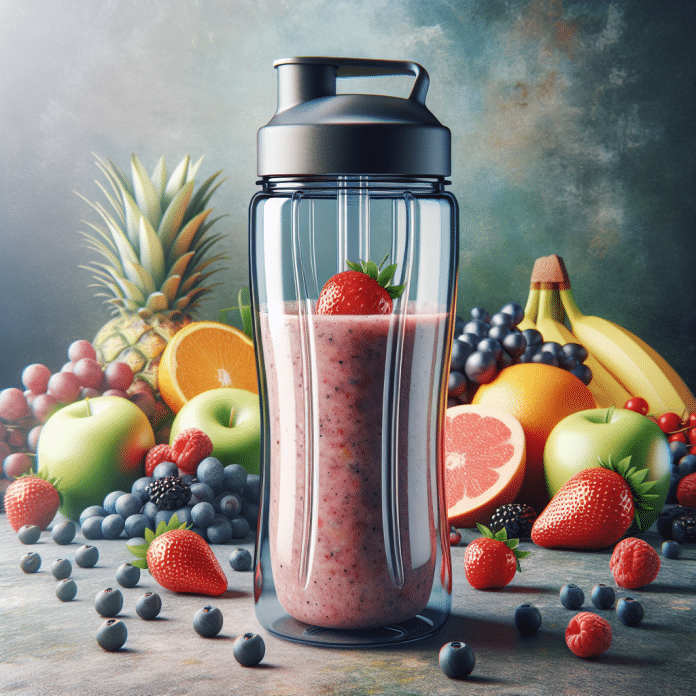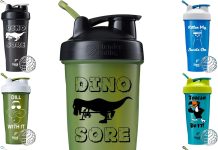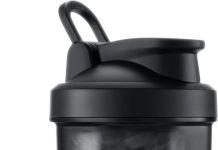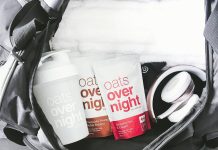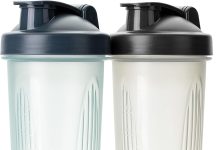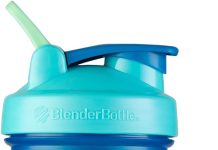Have you ever wondered if Blender Bottles come with any health or safety concerns? Well, you’re about to find out! In this article, we will delve into the potential risks and benefits of using Blender Bottles. Whether you’re a fitness enthusiast, a busy professional, or simply someone who enjoys a well-blended smoothie, this information will help you make an informed decision about your drinkware choices. So, let’s get started and discover if there are any health or safety concerns with Blender Bottles!
Review contents
BPA and Plastic Concerns
Potential Health Risks of BPA
You may have heard concerns about the use of Bisphenol A (BPA) in plastic products, including blender bottles. BPA is a chemical that is used to harden plastics and can be found in various food and beverage containers. While BPA has been widely used for many years, there have been concerns about its potential health effects.
Studies have suggested that exposure to high levels of BPA may have negative impacts on human health. It is believed that BPA can mimic the hormone estrogen and interfere with the endocrine system, which could potentially lead to various health issues. Some studies have linked BPA exposure to reproductive problems, heart disease, and certain types of cancers.
However, it is important to note that many plastic products, including blender bottles, are now labeled as BPA-free. This means that they do not contain BPA and should not pose the same health risks associated with this chemical. When purchasing a blender bottle, make sure to look for the BPA-free label to ensure your safety.
Safety of Plastic Used in Blender Bottles
Another concern regarding plastic blender bottles is the overall safety of the plastic used in their manufacturing. While BPA has been a major concern, there are still worries about potential harmful chemicals leaching into food or beverages from the plastic.
Plastic used in blender bottles is typically made from a material called Tritan, which is known for its durability and resistance to stains and odors. Tritan plastic is considered safe for food contact and has been rigorously tested for potential leaching of harmful substances.
Numerous studies have shown that Tritan plastic does not contain hazardous chemicals in detectable amounts. It is considered a safe option for food and beverage containers, as it does not leach harmful substances into the contents. However, it is still essential to follow proper usage and cleaning guidelines to ensure the safety of your blender bottle.
Chemical Leaching
Possible Contamination of Food or Beverages
Chemical leaching is a concern when it comes to any plastic product, including blender bottles. The possibility of harmful chemicals leaching into food or beverages from the plastic can raise concerns about potential contamination.
When blender bottles are subjected to heat or strong detergents, there is a slight risk of chemicals leaching into the contents. These chemicals could potentially come from the plastic itself or from any residues left on the bottle after cleaning.
To minimize the risk of chemical leaching, it is best to avoid exposing your blender bottle to high temperatures or harsh cleaning agents. Use mild soap and warm water for cleaning and avoid the dishwasher, as the high heat and vigorous spray may degrade the plastic and increase the risk of leaching.
Effects of Chemicals on Health
The effects of chemicals leaching from plastic into food or beverages are still a topic of debate among researchers. While some studies suggest potential health risks, others conclude that the levels of harmful substances are negligible and unlikely to cause adverse effects.
However, it is always better to err on the side of caution. Minimizing exposure to potentially harmful chemicals is important for maintaining overall health and well-being. By following proper cleaning and usage guidelines, you can reduce the risk of chemical leaching and ensure the safety of your blender bottle.
Quality and Durability
Material Integrity and Potential Safety Issues
When considering any food or beverage container, it is crucial to evaluate the quality and durability of the materials used. With blender bottles, ensuring the material integrity is essential to avoid potential safety issues.
Blender bottles are typically made from high-quality plastic, such as Tritan, which is known for its strength and durability. These materials are designed to withstand the rigors of blending and shaking without breaking or leaking. However, it is still important to check the overall quality of the blender bottle before use.
Inspect the bottle for any cracks, dents, or signs of wear that may compromise its structural integrity. A damaged blender bottle can pose risks such as leakage, which may result in spills, injuries, or contamination of the contents. Always replace a damaged blender bottle to ensure your safety and the quality of your beverages.
Long-Term Use and Maintenance
Blender bottles are designed for long-term use, allowing you to enjoy your favorite shakes and beverages for an extended period. However, proper maintenance is crucial to ensure the longevity and safety of your blender bottle.
Regularly inspect your blender bottle for any signs of wear or deterioration. Over time, the plastic may become scratched or discolored, which can make it more difficult to clean and potentially harbor bacteria. If your blender bottle shows signs of wear, it is advisable to replace it to maintain optimal hygiene and prevent any potential health risks.
Cleaning the blender bottle after each use is essential for maintaining its quality and preventing the growth of mold or bacteria. Follow the manufacturer’s cleaning instructions, which typically involve hand-washing with mild soap and warm water. Proper maintenance and care will help ensure the longevity and safety of your blender bottle.
Mold and Bacteria Growth
Prevalence in Blender Bottles
Like any food or beverage container, blender bottles can become a breeding ground for mold and bacteria if not properly cleaned and maintained. The moist and dark environment inside the bottle provides an ideal setting for these microorganisms to thrive.
Mold and bacteria growth in blender bottles can occur due to various factors, such as leftover food particles, inadequate cleaning, or prolonged storage without proper drying. If left unchecked, mold and bacteria can compromise the safety and quality of your beverages and potentially lead to health issues.
Health Risks and Prevention
Consuming beverages from a blender bottle contaminated with mold or bacteria can pose health risks, including gastrointestinal issues, infections, or allergic reactions. To prevent these risks, it is crucial to take the necessary steps to inhibit mold and bacteria growth.
Proper and thorough cleaning after each use is essential to prevent the buildup of food particles and bacteria. Use warm water and mild soap to clean the bottle, paying special attention to the lid and any crevices where mold or bacteria may be hiding. Allow the blender bottle to air dry completely before sealing it, as moisture promotes mold growth.
Additionally, storing your blender bottle in a clean and dry environment when not in use can help prevent mold and bacteria growth. Avoid leaving your blender bottle in a damp gym bag or locker, as this can create a favorable environment for microorganisms. By following these prevention measures, you can ensure the safety and hygiene of your blender bottle.
Leakage and Spillage
Impact on Safety and Hygiene
One of the primary concerns when using any food or beverage container is the risk of leakage and spillage. Blender bottles are designed to be shaken vigorously during the blending process, making it crucial to ensure the lid’s tightness and overall seal to prevent any accidents.
Leakage and spillage can have various consequences, including injuries, contamination of the contents, or damage to personal belongings. If your blender bottle leaks during transportation or while in use, it can lead to an unsafe and unsanitary situation.
Causes and Prevention
The most common causes of leakage and spillage in blender bottles are a loose or faulty lid, a damaged seal, or improper assembly. To prevent these issues, it is important to carefully inspect and maintain your blender bottle’s lid and sealing mechanisms.
Regularly check the lid for any signs of wear, such as cracks or loose parts, that may compromise its ability to create a tight seal. Ensure that all components, including the lid, seal, and drinking spout, are correctly aligned and securely fastened before shaking or transporting your blender bottle.
Avoid overfilling the blender bottle, as it can put additional pressure on the seal and increase the risk of leakage. Fill the bottle only to the recommended capacity, leaving enough space for the contents to be mixed without compromising the lid’s seal.
By taking these preventive measures and regularly inspecting your blender bottle for any potential issues, you can minimize the risk of leakage and spillage, ensuring safety and maintaining hygiene.
Cleaning Difficulties
Potential Health Risks from Inadequate Cleaning
Proper cleaning of blender bottles is essential for maintaining hygiene and preventing the growth of mold, bacteria, or other harmful microorganisms. Inadequate cleaning practices can lead to a buildup of residues and create a breeding ground for pathogens.
Using a blender bottle that is not adequately cleaned can result in potential health risks. Residues left in the bottle can contaminate new beverages, leading to gastrointestinal issues or foodborne illnesses. It is important to ensure that your blender bottle is thoroughly cleaned after each use to minimize these risks.
Ways to Ensure Proper Cleaning
To ensure proper cleaning of your blender bottle, follow these guidelines:
-
Rinse the bottle immediately after use: Rinse the bottle with warm water to remove any remaining contents and prevent the formation of stubborn residues.
-
Use mild soap and warm water: Wash the blender bottle with mild soap and warm water, paying attention to the lid and any crevices where residues may accumulate.
-
Use a bottle brush: For hard-to-reach areas, use a bottle brush to scrub the inside of the blender bottle thoroughly.
-
Allow the bottle to air dry: After cleaning, allow the blender bottle to air dry completely before sealing it. This will prevent the growth of mold or bacteria due to moisture.
-
Avoid the dishwasher: While some blender bottles are dishwasher safe, it is generally recommended to hand-wash them to preserve their quality and prevent potential leaching of harmful chemicals.
By adhering to these cleaning practices, you can ensure the safety and hygiene of your blender bottle, minimizing the risk of contamination and potential health issues.
Impact on Nutrient Content
Blender Bottle Design and Nutrient Retention
Blender bottles are commonly used for preparing and consuming various shakes, smoothies, and supplements. The design of the blender bottle can impact the retention of nutrients in these beverages.
The blending mechanism in a blender bottle, usually in the form of a wire whisk or a blending ball, helps to mix the ingredients and create a smoother texture. This design allows for better dispersion of nutrients throughout the beverage, ensuring that each sip contains a consistent amount of nutrients.
However, it is important to note that blending in a bottle may not achieve the same level of blending efficiency as a traditional blender. Some ingredients, such as fibrous fruits or leafy greens, may not be fully broken down or blended as thoroughly in a blender bottle. This can affect the overall nutrient content and texture of the beverage.
Effects on Food or Supplement Quality
The quality of the ingredients used in your shakes or supplements can also impact the overall nutrient content. It is important to choose high-quality ingredients that are fresh and free from contaminants to ensure the optimal nutritional value of your beverages.
Additionally, proper storage and handling of ingredients, both before and after blending, are crucial for maintaining their quality. Ensure that perishable ingredients, such as fresh fruits or dairy products, are stored in the appropriate conditions to prevent spoilage or bacterial growth.
By paying attention to the overall quality and handling of ingredients, as well as using a well-designed blender bottle, you can maximize the nutrient content and quality of your beverages.
Compatibility with Dishwashers and Microwaves
Safety of Using Blender Bottles in Dishwashers
Many blender bottles claim to be dishwasher safe, allowing for convenient cleaning without the need for hand-washing. However, it is important to ensure the compatibility of your blender bottle with dishwashers to maintain its quality and safety.
While some blender bottles can safely withstand dishwasher cycles, others may not be able to withstand the high heat and vigorous spray. This can lead to deformation of the plastic, compromising the bottle’s structural integrity and potentially increasing the risk of chemical leaching or leakage.
To determine if your blender bottle is dishwasher safe, refer to the manufacturer’s instructions or look for specific labeling on the product. If your blender bottle is not recommended for dishwasher use, it is best to stick to hand-washing to ensure its longevity and safety.
Potential Risks of Microwaving Blender Bottles
Microwaving a blender bottle is generally not recommended, as the plastic used in these bottles may not be microwave safe. Heating plastic containers in the microwave can cause them to release harmful chemicals or melt, potentially contaminating the food or beverage and posing health risks.
To safely heat your beverages, transfer them to a microwave-safe glass or ceramic container before heating. This will help avoid any potential risks associated with microwaving plastic blender bottles.
Always follow the manufacturer’s instructions and recommendations regarding dishwasher and microwave usage to prevent any accidental damage or health hazards.
Safe Usage Guidelines
Recommended Operating Instructions
To ensure the safe and proper use of your blender bottle, follow these recommended operating instructions:
-
Read the user manual: Familiarize yourself with the manufacturer’s instructions and guidelines provided in the user manual. This will help you understand the specific features and limitations of your blender bottle.
-
Follow capacity guidelines: Only fill the blender bottle up to the recommended capacity indicated by the manufacturer. Overfilling can lead to leakage, compromising safety and hygiene.
-
Securely tighten the lid: Before shaking or transporting your blender bottle, make sure the lid is securely tightened. This will prevent any accidental leakage or spillage.
-
Avoid hot liquids: Unless specifically designed for hot liquids, refrain from using your blender bottle for beverages at high temperatures. The plastic may not be able to withstand the heat, potentially causing deformation or chemical leaching.
-
Handle with care: Avoid dropping or mishandling your blender bottle, as this can lead to cracks or other damage that compromises its safety and functionality.
By following these guidelines, you can ensure the safe and optimal use of your blender bottle, promoting your well-being and enjoyment of your beverages.
Regulatory Standards and Certifications
Industry Compliance and Safety Certifications
To ensure consumer safety, the manufacturing and distribution of blender bottles are subject to various regulatory standards and certifications. These standards are put in place to ensure that blender bottles meet specific criteria, such as material safety, quality control, and performance.
Responsible manufacturers strive to comply with these standards and may obtain safety certifications to demonstrate their commitment to consumer safety. These certifications are issued by recognized independent organizations that assess product safety and quality.
When purchasing a blender bottle, look for safety certifications such as the FDA (Food and Drug Administration) approval or certifications from reputable organizations like NSF International or the Consumer Product Safety Commission. These certifications indicate that the blender bottle has been tested and meets specific safety standards.
Potential Concerns in Certification Processes
While safety certifications provide reassurance regarding the quality and safety of blender bottles, it is important to note that certification processes can vary. Some certifications may have more rigorous standards and testing protocols than others.
It is advisable to research and understand the specific requirements of the certifications associated with blender bottles. This can give you a better understanding of the measures taken by the manufacturer to ensure the safety and quality of their product.
By considering regulatory standards and certifications, you can make more informed choices when purchasing a blender bottle and have confidence in its safety and compliance with industry guidelines.
In conclusion, while there may be some health and safety concerns associated with blender bottles, careful consideration of the materials, cleaning practices, and usage guidelines can help ensure safe and enjoyable use. By being aware of potential risks and following recommended procedures, you can minimize any potential health hazards and fully enjoy the benefits of your blender bottle. Remember, your well-being and satisfaction are of utmost importance, so make informed choices to protect yourself and those who use blender bottles.

